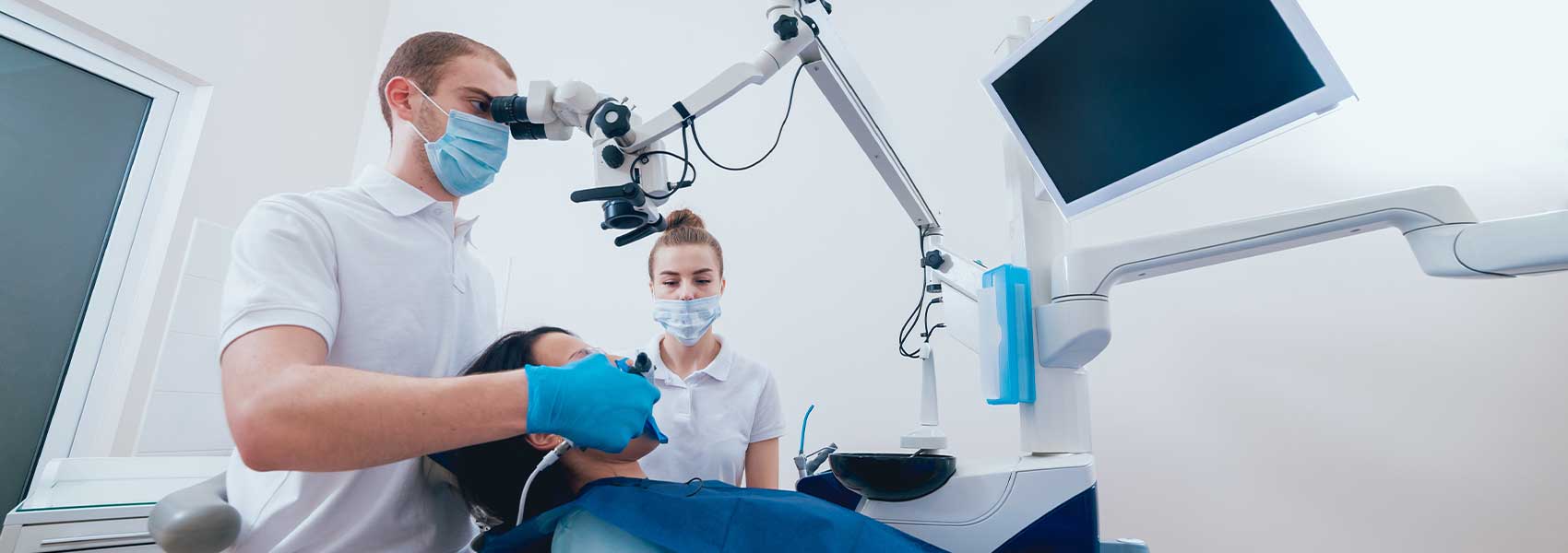Our oral surgeon can provide a wide array of services including tooth extraction, wisdom teeth extraction, bone grafting, and placing dental implants for individual teeth replacement, bridges, and even full mouth reconstruction. The most important aspect of our oral surgery services is that we can perform your procedure and schedule your follow-up appointments all in the same office. There is no separate appointment making, no extra paperwork, no transfer of records, no driving to other locations, and no re-explaining things to someone new. We can offer comprehensive care and service for it all at our San Antonio dental clinic.
Services Offered By Our Oral Surgeon
Wisdom Teeth Extraction
Your wisdom teeth are four permanent adult teeth that are found on the top and bottom of the back corners of your mouth. Your wisdom teeth typically appear between 17 and 25 years of age since they are the last permanent teeth to appear in the mouth. Every person is different: some never develop wisdom teeth at all, others’ wisdom teeth grow in normally with no problems, and many may require extraction.
Wisdom teeth extraction is required if one or more wisdom teeth do not have room to grow. If left untreated, wisdom teeth can cause pain, infection, or other dental problems that can result in pulling the tooth. Before any serious pain or problems arise, wisdom tooth extraction may be done by a dentist or an oral surgeon which involves a surgical procedure.
Tooth Extraction
If a tooth has been broken or damaged by decay, we will always try to fix it with a filling, crown, or other appropriate treatment. Sometimes, though, there’s too much damage for the tooth to be repaired through oral surgery. In this case, the tooth may need to be extracted.
We will use X-rays of the area to help plan the best way to remove the tooth. You may have intravenous (IV) anesthesia, which can range from conscious sedation to general anesthesia. If so, we will give you instructions to follow to prepare for that. A simple extraction is performed on a tooth that can be seen in the mouth and your Rolling Oaks Dentist will likely just perform this procedure. A surgical extraction is done when a tooth has broken off at the gum line or if the tooth is still below the gum or if there are complications with the roots. Surgical extractions are done by our oral surgeon.
Most simple extractions can be done using just an injection (a local anesthetic). You may also receive medications to help you relax if this is needed. For a surgical extraction, you will receive a local anesthetic, and you may also have IV anesthesia. During a tooth extraction, you can expect to feel pressure, but you should not experience pain. If you feel any pain or pinching, tell the dentist or oral surgeon right away.
Bone Grafting
After experiencing tooth loss, trauma, gum disease, or even after tooth extraction, many dental bone grafting procedures are performed in order to restore your bone to its previous form. Many people don’t realize that if you have lost one or more teeth that are not replaced, you will start a gradual bone loss in that area. While the need for bone grafting has been significantly reduced, it has not been eliminated entirely. However, in most cases, it is now a minimally invasive procedure that can be managed quite easily.
While bone grafting can sound pretty scary at first, the truth is that bone grafting in the oral cavity today is a routine, predictable, and painless procedure. There are plenty of reasons that restoring and maintaining facial bone structure is important. For optimal results, many dental procedures require that the bone be as close as possible to its original dimension and position as possible. Sometimes the bone under your gum may not be tall or wide enough for the treatment you need. In cases like these, you will need a procedure to add bone to your jaw before implants can be placed in order for them to be stable and strong. Bone augmentation procedures usually involve adding bone or bone-like material to the jaw so that dental implants can be placed properly. Grafting procedures place a framework of material in the areas of missing bone into which these cells can enter and start the rebuilding process. Over time your cells will remodel the graft material into your own functioning bone.
Dental Implants
Dental Implants are usually considered the best option for tooth replacement, bridge placement, and denture placement. Dental Implants simply mirror the natural roots of your teeth and work to prevent bone loss that would otherwise occur with a missing tooth or teeth. A dental implant is done in two steps. Firstly, a small titanium “root replacement” is placed where the root of the tooth used to be. Titanium is used because the body accepts it easily and it fuses into the jaw bone and provides a solid base onto which a replacement tooth can be placed. Once the implant has “settled” a new tooth is placed onto it. Dental implants have a lot of strength and durability and once the procedure is complete you can eat as if you had your natural healthy tooth. Another great use of dental implants is to replace a series of missing teeth. If you are missing a section of teeth then a bridge (row of teeth) can be placed onto two dental implants. In this way, a bridge (for a section of teeth) or an entire full arch denture can be mounted permanently in place and you will feel as if you have a full set of teeth again. Read more about Dental Implants, or learn about the “All-on-4” service that we offer to help understand your options better.
Levels of Sedation
We provide several levels of sedation in order to guarantee your greatest comfort. Our Oral Surgeon is gentle and takes great care to ensure you don’t experience any discomfort throughout. Any of our surgery procedures can be done while you are under general anesthesia, so you likely won’t remember much about the experience after you wake up.




